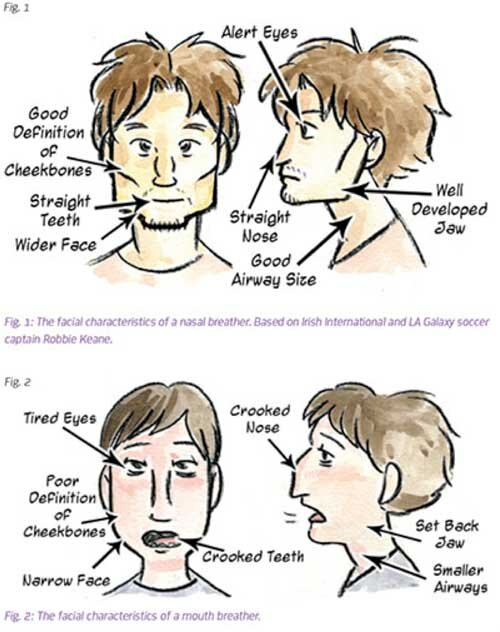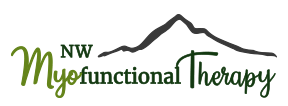Breathing through your mouth can actually change the shape of your face and alter your appearance. This is especially true for children because they are still growing. Children whose mouth breathing is not corrected may suffer from abnormal facial and dental development. Symptoms of untreated mouth breathing include long, narrow faces and mouths, less-defined cheekbones, small lower jaws, and weak chins. Other facial symptoms include gummy smiles and crooked teeth. A “mouth breather” facial expression is typically not viewed as an attractive or desirable appearance.
Other Effects on the Body
Using the mouth for breathing disrupts our natural body mechanics. The root of the problem in many cases is oxygen deprivation, which can affect a number of bodily functions and lead to symptoms such as:
- Headache
- Gingivitis and gum disease
- Sore throat & cold symptoms
- Bad breath
- Increased risk of cavities
- Poor sleep leading to chronic fatigue, sleep apnea
- High blood pressure
- Heart problems
- Poor postural changes and spinal issues
- Digestive disturbances – gas, upset stomach, acid reflux, etc.
Concerns in Children:
- Poor growth
- Weak academic performance
- ADD and ADHD symptoms
Health Concerns Associated with Mouth Breathing:
Can you relate with any of these health effects?

Here are the features of an adenoid face:
- Features of adenoid face:
- Long, narrow shape
- Flattened features
- Narrow and vaulted palate
- Elevated nostrils
- Short upper lip
- Gummy smile
- Sleepy or droopy eyes
- Small lower jaw
